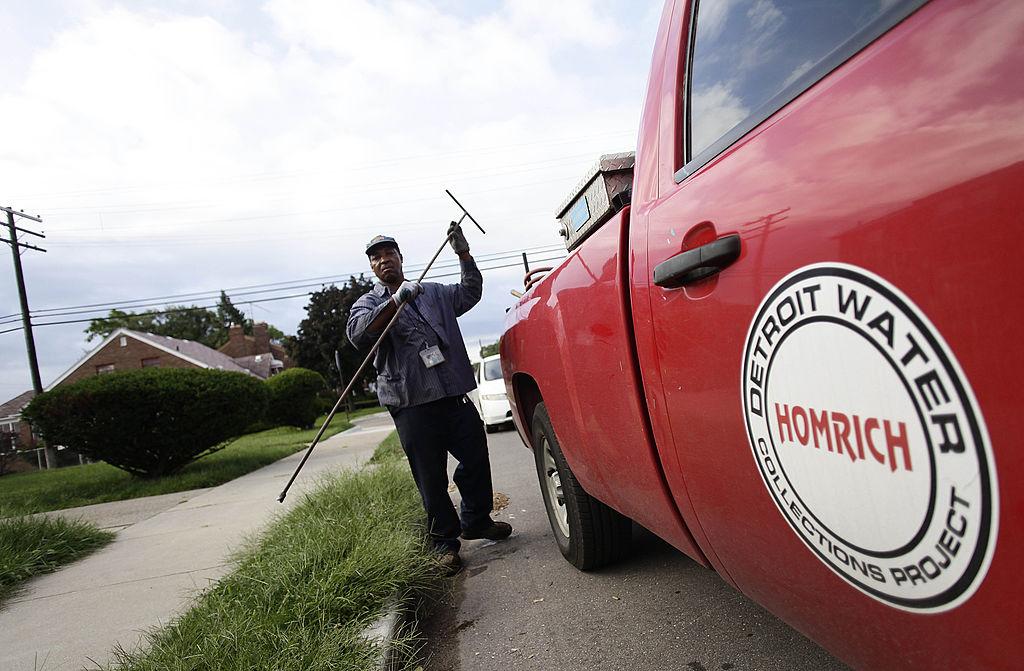DETROIT— Elevated lead or copper levels have been found in water in 19 Detroit schools amid ongoing testing at schools around the country in response to the crisis in Flint, Michigan.
Detroit Public Schools began collecting water samples two weeks ago. District spokeswoman Michelle Zdrodowski said then that a number of factors, including the lead-tainted water crisis in nearby Flint, led to “proactive and precautionary” testing.

Flushing construction worker Josh Baesl stands atop a portion of the Karegnondi Water Authority pipeline as they continue to lay new pipe connecting to Lake Huron on Wednesday, March 30, 2016 at a pipeline site off of Peters Road, between Flint River Road and Klam Road in Lapeer County's Oregon Township, Mich. Jake May/The Flint Journal-MLive.com via AP





